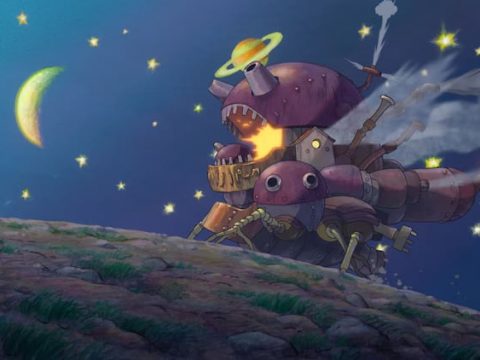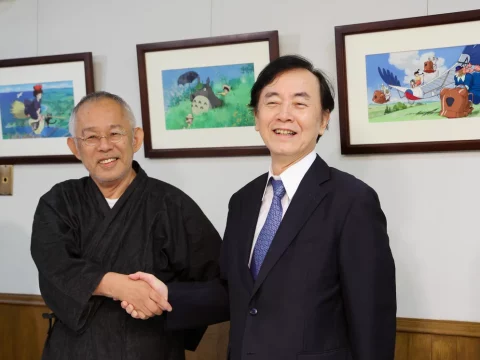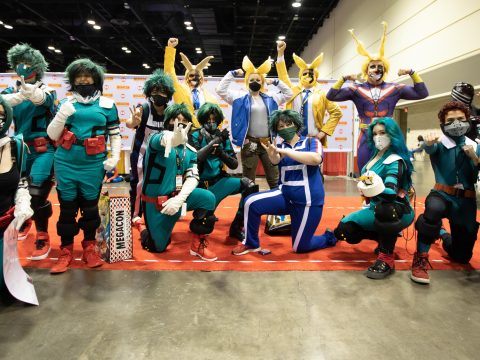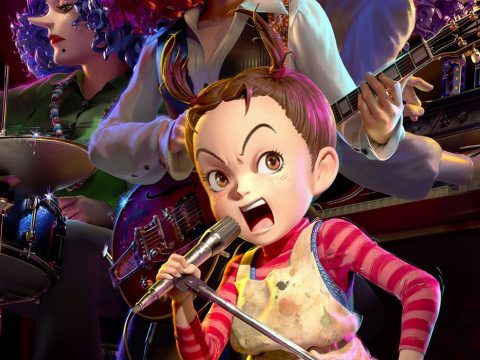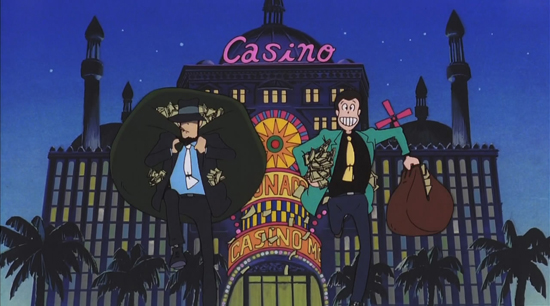
In the latest issue of Otaku USA we take a look at the original “green jacket” Lupin the Third television series, scheduled for US release in June 2012 courtesy of Discotek Media. Several of the original 23 TV episodes were directed by eventual Studio Ghibli co-founders Hayao Miyazaki and Isao Takahata, but Lupin the Third isn’t their creation. Originally created by Kazuhiko “Monkey Punch” Katou, Lupin the Third is the world’s most notorious thief. His wild exploits have made him one of anime’s most enduring characters, with the most recent TV movie having just come out a few months ago. Plus, with 2012 marking the 40th year anniversary of Lupin, a new television series is due to begin next month!
With so many Lupin comics, television series, movies, and animated works of movie-length out there, there have been so many different takes on the character over the years by so many people that it’s impossible to say what defines the “true” Lupin. The character as seen in Monkey Punch’s original manga stories is practically unrecognizable to anything we’d think of today, but for the sake of establishing a “baseline” let it suffice that the original anime incarnation of this unauthorized descendent of Maurice Leblanc’s Arsène Lupin character (the “gentleman thief”) had what the cool kids today refer to as “swagger.” Lupin III drove fancy luxury cars, drank fine liquor, smoked cigarettes from a cool lighter, wore what was at the time considered a stylish suit, hit on all the pretty ladies (and then some), and wouldn’t think twice about putting a bullet in your brain if you crossed him.
Yet to several American anime fans, there is another interpretation that differs significantly from the above which serves as THEIR “baseline” from which all other Lupin is judged (and thus, deemed lacking). That’s largely thanks to one movie and one movie alone: 1979’s The Castle of Cagliostro, which just may be the single most well-known and most-referenced Lupin the Third anime ever made. It’s doubtful anything’s ever going to change that, either.
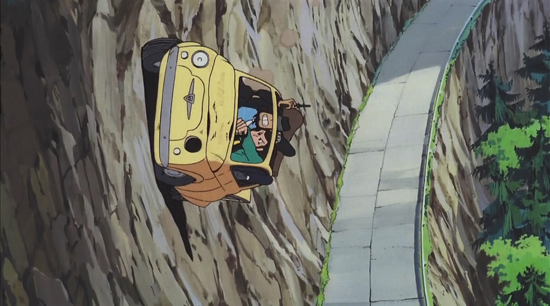
Lupin the Third: The Castle of Cagliostro is actually the second Lupin the Third film, the first being the quite underrated Secret of Mamo from the previous year. Miyazaki’s theatrical directorial debut was made in an astonishingly short time; roughly seven months from start to finish! From May to December of that year, Miyazaki had a hand in several aspects of the production from top to bottom: writing, directing, storyboarding, designs, and the like. But he wasn’t setting out to make a masterpiece as everyone expects of him now. This was “just a job”…and perhaps that’s precisely why it just might be the single most entertaining Hayao Miyazaki film ever made. Depending on whom you ask, that’s not necessarily the same as his “best,” but the lack of an explicit moral message puts it in a category all its own. Not that it’s devoid of Miyazaki’s sense of morality; more on that in a bit.
Cagliostro takes place in that fantasy-land idealized Europe that hosts so many of Miyazaki’s works, such as his adaptation of Heidi: Girl of the Alps, Kiki’s Delivery Service, and Porco Rosso to name a few. Our intrepid thief together with his gunslinger accomplice Daisuke Jigen and the samurai swordsman Goemon Ishikawa take it upon themselves to investigate the greatest money counterfeiting operation the world has ever known, which for reasons eventually clarified upon brings them to the duchy of Cagliostro. The land is under the regency rule of Count Cagliostro, whose impending wedding to the late duke’s daughter Lady Clarisse has tourists and the media abuzz like only a royal wedding can do over in Europe. It immediately becomes clear to our heroes that the bride to be wants no part of these proceedings, but both she and the secret behind the counterfeit bills are kept somewhere within the duchy’s heavily fortified castle. With the help of the cat burglar Fujiko Mine and even Interpol Inspector Koichi Zenigata, whose sole purpose in life is to see Lupin put behind bars, the planning and execution of the heist makes for one of the best action-adventure outings in anime history.
Make no mistake: The Castle of Cagliostro is a phenomenal movie that everyone should see. But I’m unsure how good a Lupin the Third movie it is, in that it’s not particularly representative of the rest of what’s out there. Perhaps it was the streaks of activist Marxism within them, but neither Miyazaki nor Takahata were very much enamored with the antics of the Lupin Gang when they found themselves assigned to direct episodes of the original series. In the October 1980 issue of Animage Miyazaki reminisced, “we were in a fix, having taken over direction midstream, and wanting more than anything else to get rid of this sense of apathy that infused the story.” A full translation along with many other hilariously bitter essays by Miyazaki that amount to him finding new and creative ways to say “everybody sucks except for me” is available in the book Starting Point: 1979-1996 from Viz Media, but the two took it upon themselves to alter everyone’s fundamental personalities to their likings. “Lupin would be happy-go-lucky, upbeat, and the son of a poor man… Jigen would be a friendly, cheery fellow, Goemon would be an anachronism and funny, and Fujiko wouldn’t advertise her cheap eroticism.” To Miyazaki, no “hero” would shoot his enemy dead between the eyes or try to take advantage of a lady in a compromised position. And although some of these traits would persist afterwards in later stories, it was never quite to this extent. So it’s extremely common for one to love this movie yet not really be as interested in the rest of Lupin.
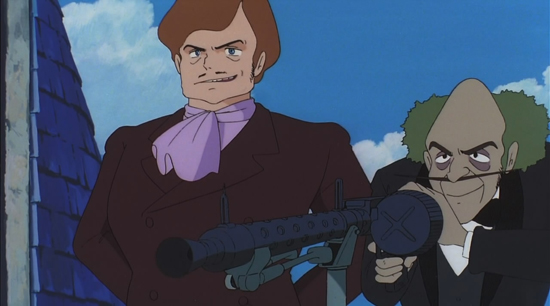
So it came to be that, with the exception of one brief flashback, the Lupin of Cagliostro would not be that scheming dirty, lecherous thief armed with a Walther P-38 and driving a luxury Mercedes Benz SSK (hyped as extra-groovy in the original pilot film because it was “Hitler’s favorite,” as a reminder to us all that Japan was indeed an ally to the Nazis). This Lupin travels the land’s winding roads in a rather unassuming yellow Fiat 500; a mini-car that sort of resembles a Volkswagen Beetle. He literally eats and sleeps out of the thing; there are no fancy watches or cigarette lighters for this thief, and at the time of release many longtime Lupin the Third fans viewed the whole affair as an affront. The Castle of Cagliostro was not met with open arms or hailed as an instant success; its status as a great classic of anime did not come to be until several years later. To be fair, it was as if someone made a James Bond movie where he stayed at Motel 6 and his “Bond mobile” was a Toyota Camry! But first impressions count for a lot, and the car chases that have commenced in that Fiat are some of the most fun you’ll see anywhere. I must confess, to this day that silly little yellow Fiat 500 is “the Lupin car” in my mind, and the fact that it’s rarely seen compared to the Mercedes always takes me some getting used to.
It turns out that The Castle of Cagliostro served as a first impression to Lupin the Third upon Americans in more ways than one. If you’re old enough to have been a teenager in 1983, footage from the various action scenes of Cagliostro was used to create Cliff Hanger, a Dragon’s Lair-style laserdisc videogame which for many in the US was their original exposure not only to Lupin and the gang, but Japanese animation itself (even if they didn’t know it at the time). “Cliff Hanger” was actually what the character Lupin the Third was renamed to, but before you scratch your heads at how in the world anyone thought THAT was a good idea, recall how Lupin the Third was created without permission granted by the Leblanc estate. As part of their settlement, various workaround measures had to be undertaken by the Japanese and name alterations for international release were first and foremost. Not many copies of Cliff Hanger exist, because when you’d fail it’d play a clip from Secret of Mamo of “Cliff” being “hanged”… from the gallows! Explicit death in a cartoon was controversial for the time because everyone knows cartoons and video games are just for kids, and no doubt these violent cartoons and video games were out to corrupt the precious youth of America!
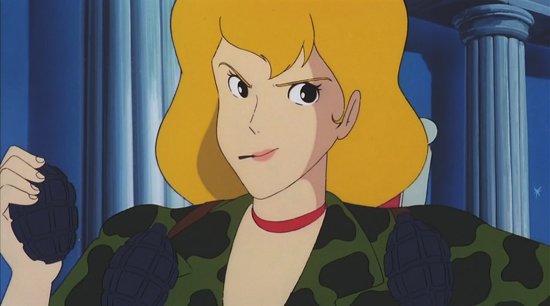
A much more common way people first saw the actual film in its relative entirety—or at least it was how I saw it!—was courtesy of a retail VHS release in 1992 by Streamline Pictures. Like everything they released it was only available dubbed in English, but this allowed for it to be carried by more comic book and video shops than a subtitled foreign film. The Streamline dub is quite well-acted (as many of Streamline’s were), but the dub is regarded as rather terrible (as many of Streamline’s were!) because the script is DRASTICALLY different from the original Japanese from start to finish. For example, in addition to adding in several bits of dialogue where there was originally silence—standard practice once upon a time—mentions of the goat emblem of the Cagliostro clan or the “goat bills” that the counterfeit money is referred to as got adapted as references to “our ancestor Goto” due to the way the Japanese pronounce “goat.” Also, for the same reasons that prompted the “Cliff Hanger” name change, Lupin is almost always referred to in dialogue as “Wolf.” Hey, look on the bright side: at least it wasn’t “Chase Tracer,” the name the Japanese still use on their licensing agreements to this day! Arsène Lupin finally enters the public domain this year, so these arbitrarily and inconsistently applied name changes should all be a thing of the past soon. The one script change that Lupin fans have derided the Streamline dub for over the last twenty years has been when Goemon’s signature stoic catchphrase “once again, I have cut a worthless object” was replaced with the flippant quip “should’ve worn an asbestos suit!” Between that particular line and the replacement of the opening credits animation with still frames for the sake of removing as much Japanese text from the finished product as possible, Streamline Pictures co-founder Carl Macek never lived down his Cagliostro release.
An uncut, Japanese language edition of The Castle of Cagliostro would not be available in the US until Manga Video released the film on DVD many years later. A brand-new, more faithful English dub was made, which features David “Solid Snake” Hayter as the voice of Lupin. This dub is the only version currently available on any American DVD. A few years after Cagliostro was released in this version, a special edition featuring restored video and audio along with some interesting extras. The interview with legendary animator, Jeep enthusiast, and former Fiat 500 owner Yasuo Otsuka is particularly essential! Of course, nothing’s perfect since for the Special Edition, the opening credits are once again replaced with stills! When it said “Special Edition,” I didn’t think it meant a George Lucas-style one!
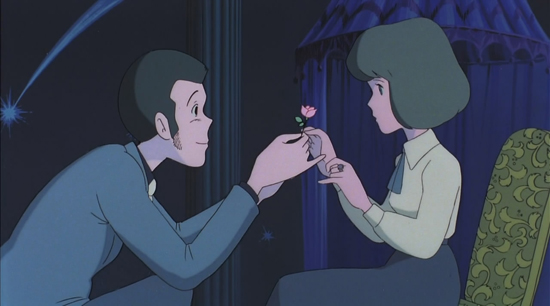
Manga has the English audio Special Edition version of the film available on Youtube in DVD quality for free. To date, no US Blu-Ray release for the film exists, but I’d like to finally have one GOOD American version of the film that’s entirely uncut with high-definition anamorphic video that includes both the Japanese and the English audio tracks. Why, in a perfect world they could even follow the lead of the upcoming US Blu-Ray release of The Secret World of Arrietty and include both English dubs! I know that Cliff Hanger actually got its own separate English dub, but those were only select scenes. Let’s not be unreasonable here!
I honestly needn’t sell anybody on seeing The Castle of Cagliostro. If you haven’t seen it, go watch it already. If you’ve seen it and wish to learn more about this film specifically beyond just what’s on Wikipedia, I recommend listening to Chris Meadows’ fan-produced commentary track. If your primary focus is on Cagliostro as it fits into Hayao Miyazaki’s greater body of work, then a fine start is the book Hayao Miyazaki: Master of Japanese Animation by Helen McCarthy. If you want to learn more about the vast array of Lupin the Third material available, I recommend the Lupin III Encyclopedia and LupinTheThird.com. There are plenty of interesting things to talk about regarding this film which I omitted for the sake of length (so no, I did not “forget”). Why, I didn’t even bother to mention how Miyazaki by way of Clarisse is considered to have given birth to the Dread Specter of Moé as we know it today! What do you think of this movie, and how do you like it compared to the rest of Lupin the Third? Will you be watching the new animated TV series? I know I will be!
[Pre-emptive comment disclaimer: if you’re thinking about mentioning how Lupin the Third: The Castle of Cagliostro was a direct inspiration on certain moments in The Great Mouse Detective or Batman: The Animated Series or video games such as Thief: The Dark Project and Time Crisis, don’t bother! I just did and there’s not much more to talk about besides that without spoiling stuff for people! Also, I will have NEGATIVE patience for anyone who starts to say about how they totally know that Steven Spielberg supposedly said at Cannes how the film contains the greatest car chase in cinema history. Listen: I get how that rumor has persisted for so long that it’s even mentioned on the DVD ad copy, but seeing as how no concrete evidence outside of the connect-the-invisible-dots “logic” of conspiracy theorists has surfaced to corroborate this after 26 years of people saying “yeah dude, it’s totally true!”, JUST DROP IT ALREADY.]
Update 5/22/14: Lupin III: The Castle of Cagliostro received a remastered theatrical release in Japan this year, and Matt Schley has provided his impressions.


